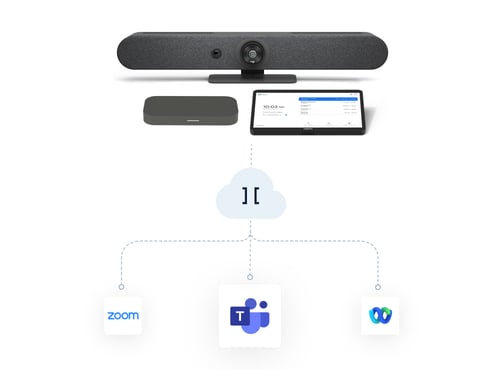Granting your employees the ability to work from other locations than the office is proven to increase efficiency and contribute to a better work-life balance. In fact, it fosters a 50% lower turnover and 17% higher productivity rate.
But how do you make sure your company creates a good remote working environment for folks who are not in the office every day? Is it enough to just let people know that they can do their work from home?
No – you probably figured that one out yourself. At least you would need some kind of communication tool for the remote workers, for them to communicate with both each other and the people in office. But of course, there is more to it than that.
5 tips on how to build a great culture for remote workforce:
1. Experiment with when working from home is most efficient
Some days are better fit for working from home than others. Try working remote on a day with bad weather, on a day before a holiday, or on a day when key people are away on business travels. You’ll be surprised by how much more efficient things can get.
Imagine an employee that sits in traffic several hours a day: Do you think that person is super excited to go to work every day? Probably not. Tom Bloom, professor at Stanford Graduate School of Business, said that giving people a choice as to when they want to work from home will increase productivity tremendously.
You may find that Fridays are the best days to have some of your employees work remote, or maybe that half days at the office works just awesome. Experimentation is key.
What’s important to note is that employee preferences matter a great deal and that these might shift when the employees start getting used to working from home. And of course, people are different, so “one size won’t fit all.”
2. Clarify expectations and have your employees share their tips for working from home
The employee benefits of working from home are many – including fewer distractions, increased personal productivity and a higher degree of confidence.
In order for this to work, your employees need to be structured enough to get their job done in surroundings which are usually associated with free time. A good idea is to have colleagues share their experiences regarding what works and what doesn’t when working remote.
Set up a “sharing is caring” meeting, and let everyone know in advance. Ask them to bring their top 3 tips for working from home. That way, people won’t be missing out on valuable tips and tricks that perhaps would have gone over their head if shared randomly.

3. Create a work from home policy
To create a productive and efficient culture for working from home, it can be smart to set some rules to make sure people actually do their work. In short, a work from home policy should address the following points:
- Define the roles that can’t be done remotely
- Start slow
- Set mandatory office days if appropriate
- Define result-driven performance targets
- Select the right tools
- Make sure your privacy policies and processes are up to date
- Create your process
Of course, these points depend on your employees, your industry, and so on.
4. Treat your remote workers the same way you treat the ones at the office
When it comes to communication, nothing competes with actually being able to see people while talking to them. You would probably often feel better talking face to face with someone at the office when asking for advice or discussing a matter, so why wouldn’t you do the same with your remote team?
Schedule regular virtual meetings together to ensure a united team. Here, we don’t mean group chats, group emails, or conference calls: We mean video!
Gathering your team together so they can see one another will improve group dynamics more than any number of emails or phone calls ever will. Seeing facial expressions when communicating something will also go a great length in hatching out potential misunderstandings from written communication.
You can also set up a videoconferencing system so that they can, on their own initiative and outside of the group meetings, call each other on video to have a quick chat or a meeting. Don’t let working in separate locations impact your company culture in a bad way, when it really doesn’t have to be the case.
5. Choose the tools
“Working from home is a future-looking technology,” Stanford Graduate School of Business professor Nicholas Bloom told an audience during TEDxStanford.
For everybody to be able to do their work properly, it is vital that they have access to the right tools and resources – be it people, documents, or other tools and pieces of information.
A way of ensuring this is to choose a good video conferencing solution that enables high-quality meetings and is simple to use. Make sure you also have a good way to share documents, such as Google Documents, and systems for delegating tasks, such as Trello.
This ensures that everyone on the team is aligned, even though you’re not in the same office. A videoconferencing solution, especially, will let people have face to face communication with each other even though they are not actually together physically.
The future will only make these communications tools better and more accessible, so be prepared for the future and start building that great culture for your remote workers.
- Digital transformation





